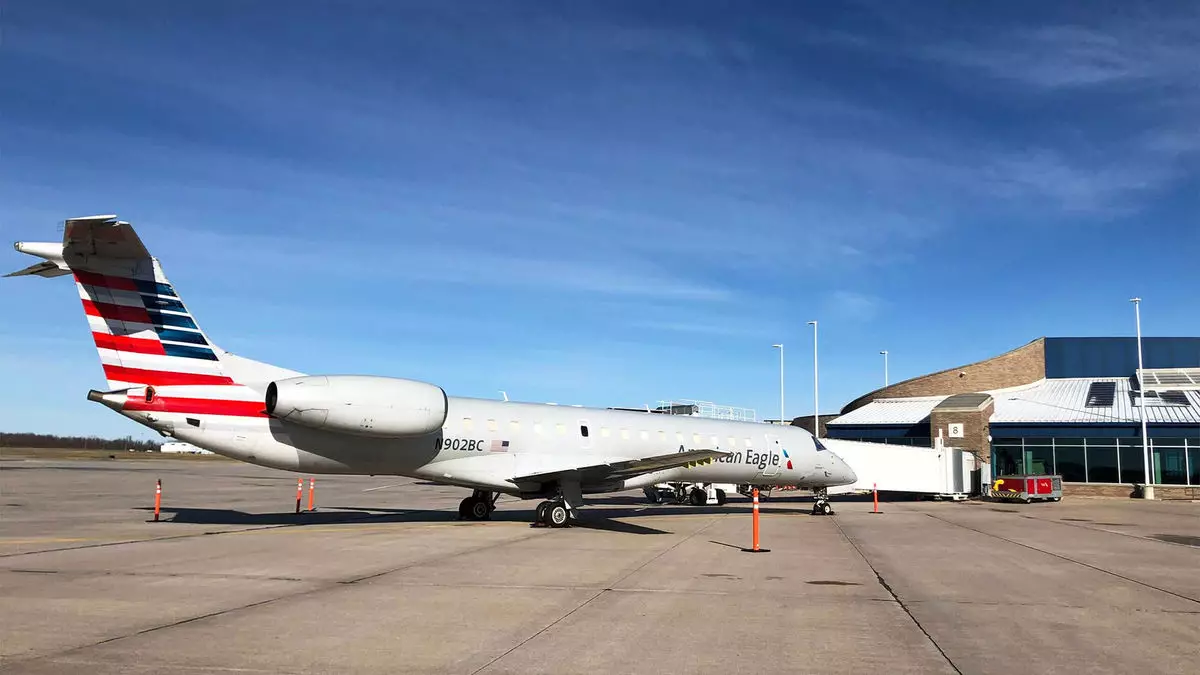In the wake of the COVID-19 pandemic, many small airports across the United States, including Appleton Airport in northeast Wisconsin, observed a significant decline in air service. This decrease was primarily attributed to a drastic shortage of pilots, which led major airlines such as American, Delta, and United to ground numerous regional flights. The implications of this pilot scarcity were profound, as communities relied heavily on these air services for both personal travel and business logistics. Yet, in the face of adversity, Appleton Airport has managed to see a rebirth of its air services, highlighting the resilience of regional connectivity.
In June, a notable milestone was reached when American Airlines initiated its first direct service from Appleton to the bustling hub of Dallas-Fort Worth. This service, operated by an American Eagle-branded regional jet, marked a significant turning point, as it joined another recently launched route to Charlotte. Over the past year, American Airlines has not only introduced these critical connections but has also collaborated with regional operators like Delta and United to amplify frequency, dramatically enhancing Appleton’s operational dynamics.
The numbers tell a compelling story. Between October 2021 and October 2023, while the airport initially faced a stark 31% reduction in flights from major carriers, recent trends indicate that Appleton has successfully rebounded, with flight counts now at 92% of pre-pandemic levels. Even more encouragingly, the introduction of larger regional aircraft has pushed seat availability beyond pre-pandemic figures by nearly 6%. This increment illustrates that Appleton has not just returned to its former capacity but has surpassed it, thanks to strategic decisions and increased airline activity.
The revitalized air services have had a noticeable ripple effect on Appleton’s broader economy. With a population of around 250,000 residents, enhanced connectivity has simplified travel for both business patrons and leisure travelers. Jesse Funk, Appleton Airport’s air service and business development manager, noted the significant convenience that these developments bring. Improved access to the wider U.S. flight network means that traveling for business or pleasure can now be done with relative ease, providing substantial economic benefits for the region. Furthermore, the competitive air travel landscape is essential for keeping airfare prices reasonable, thereby stimulating more travel.
Furthermore, the increase in air service activity could potentially attract new businesses to the area. Corporations often factor in travel accessibility when deciding on locations, suggesting that a robust air service can enhance Appleton’s attractiveness as a business hub.
While Appleton is experiencing a post-pandemic resurgence, it is also worth noting that this phenomenon is mirrored in numerous small to medium-sized communities across the nation. Airlines are gradually recovering from the harsh pilot shortage that struck in late 2021. In recent months, American Airlines reported a 14.9% increase in its regional capacity compared to the previous year, while Delta and United have progressively managed to expand their regional offerings as their pilot hiring processes intensified.
Delta, in particular, expressed optimism about reaching a full operational capacity akin to 2019 levels by next summer. Such pronouncements reflect a surfacing confidence in the industry’s recovery trajectory as airlines strive to rebuild their regional networks. However, the challenges remain—particularly the long-term strategic shift by major airlines towards prioritizing more profitable mainline services over regional flights. Despite recent growth, the overall number of regional flights remains 25% lower compared to pre-pandemic levels.
The Regional Airline Association’s latest reports offer a mixed bag of assessments regarding the state of regional air service. Many smaller airports, particularly those serving barely over 0.05% of U.S. passenger traffic, have experienced service reductions, highlighting that not every airport is enjoying the same resurgence as Appleton. Particularly concerning is the possibility of a re-emerging pilot shortage, given the cyclical nature of hiring and service demands.
Despite these challenges, Appleton Airport is keen on maintaining its current momentum. Funk’s sentiment resonates with a broader ambitious strategy—rather than resting on recent achievements, there is an ongoing effort to further enhance service offerings and draw in more airlines.
While Appleton Airport celebrates its recent successes in re-establishing flight routes, a forward-looking approach and an understanding of the aviation landscape’s complexities will be essential for sustaining growth in regional air service. The flight out of the pandemic clouds is clear, but vigilance remains key to ensuring the longevity of Appleton’s air travel renaissance.

